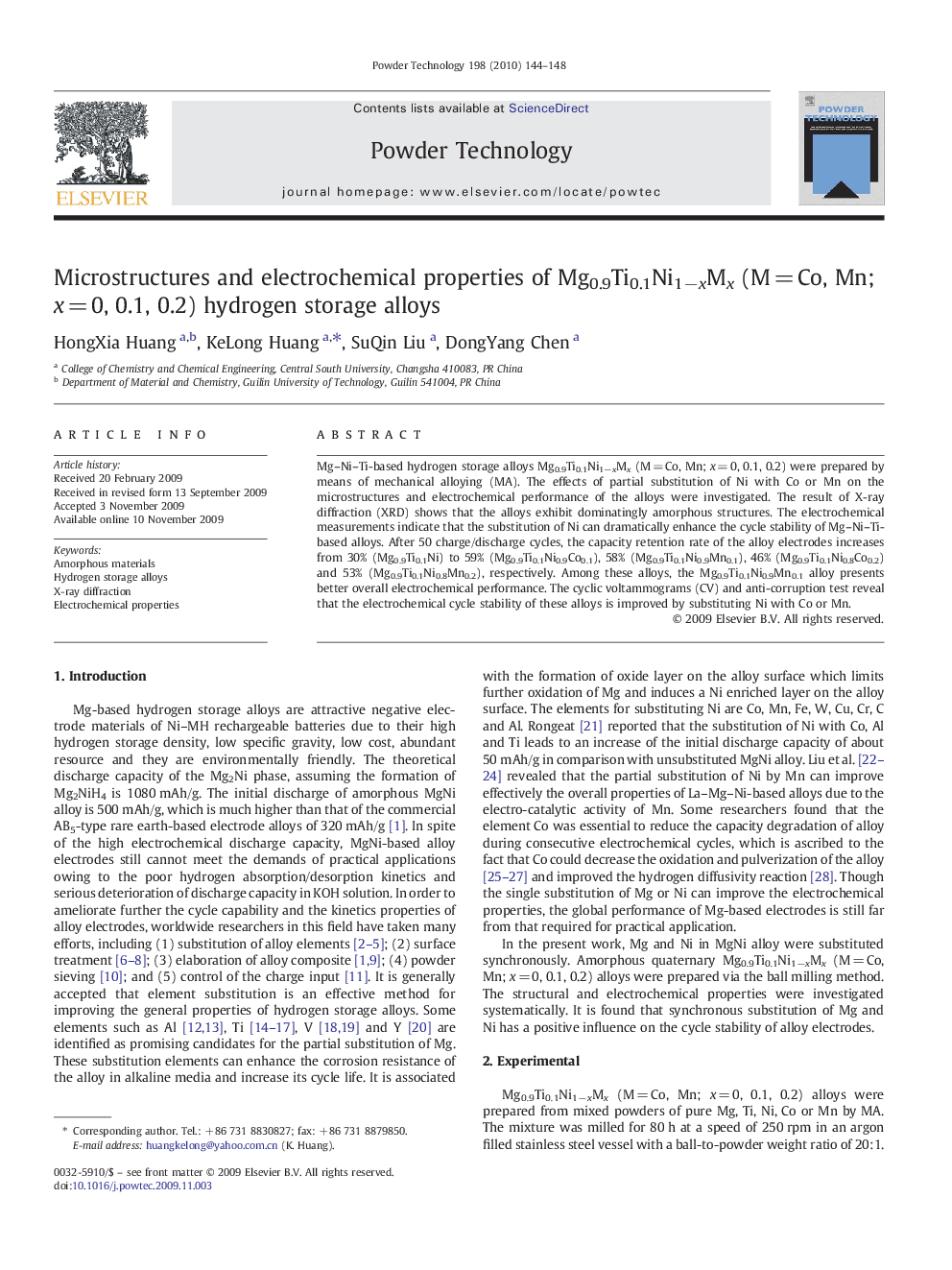| Article ID | Journal | Published Year | Pages | File Type |
|---|---|---|---|---|
| 238379 | Powder Technology | 2010 | 5 Pages |
Mg–Ni–Ti-based hydrogen storage alloys Mg0.9Ti0.1Ni1−xMx (M = Co, Mn; x = 0, 0.1, 0.2) were prepared by means of mechanical alloying (MA). The effects of partial substitution of Ni with Co or Mn on the microstructures and electrochemical performance of the alloys were investigated. The result of X-ray diffraction (XRD) shows that the alloys exhibit dominatingly amorphous structures. The electrochemical measurements indicate that the substitution of Ni can dramatically enhance the cycle stability of Mg–Ni–Ti-based alloys. After 50 charge/discharge cycles, the capacity retention rate of the alloy electrodes increases from 30% (Mg0.9Ti0.1Ni) to 59% (Mg0.9Ti0.1Ni0.9Co0.1), 58% (Mg0.9Ti0.1Ni0.9Mn0.1), 46% (Mg0.9Ti0.1Ni0.8Co0.2) and 53% (Mg0.9Ti0.1Ni0.8Mn0.2), respectively. Among these alloys, the Mg0.9Ti0.1Ni0.9Mn0.1 alloy presents better overall electrochemical performance. The cyclic voltammograms (CV) and anti-corruption test reveal that the electrochemical cycle stability of these alloys is improved by substituting Ni with Co or Mn.
Graphical AbstractsMg–Ni–Ti-based hydrogen storage alloys Mg0.9Ti0.1Ni1−xMx (M = Co, Mn; x = 0, 0.1, 0.2) were prepared by means of mechanical alloying (MA). The electrochemical measurements indicate that the substitution of Ni can dramatically enhance the cycle stability of alloys. The cyclic voltammograms and anti-corruption test reveal that the electrochemical cycle stability of these alloys is improved by substituting Ni with Co or Mn.Figure optionsDownload full-size imageDownload as PowerPoint slide
